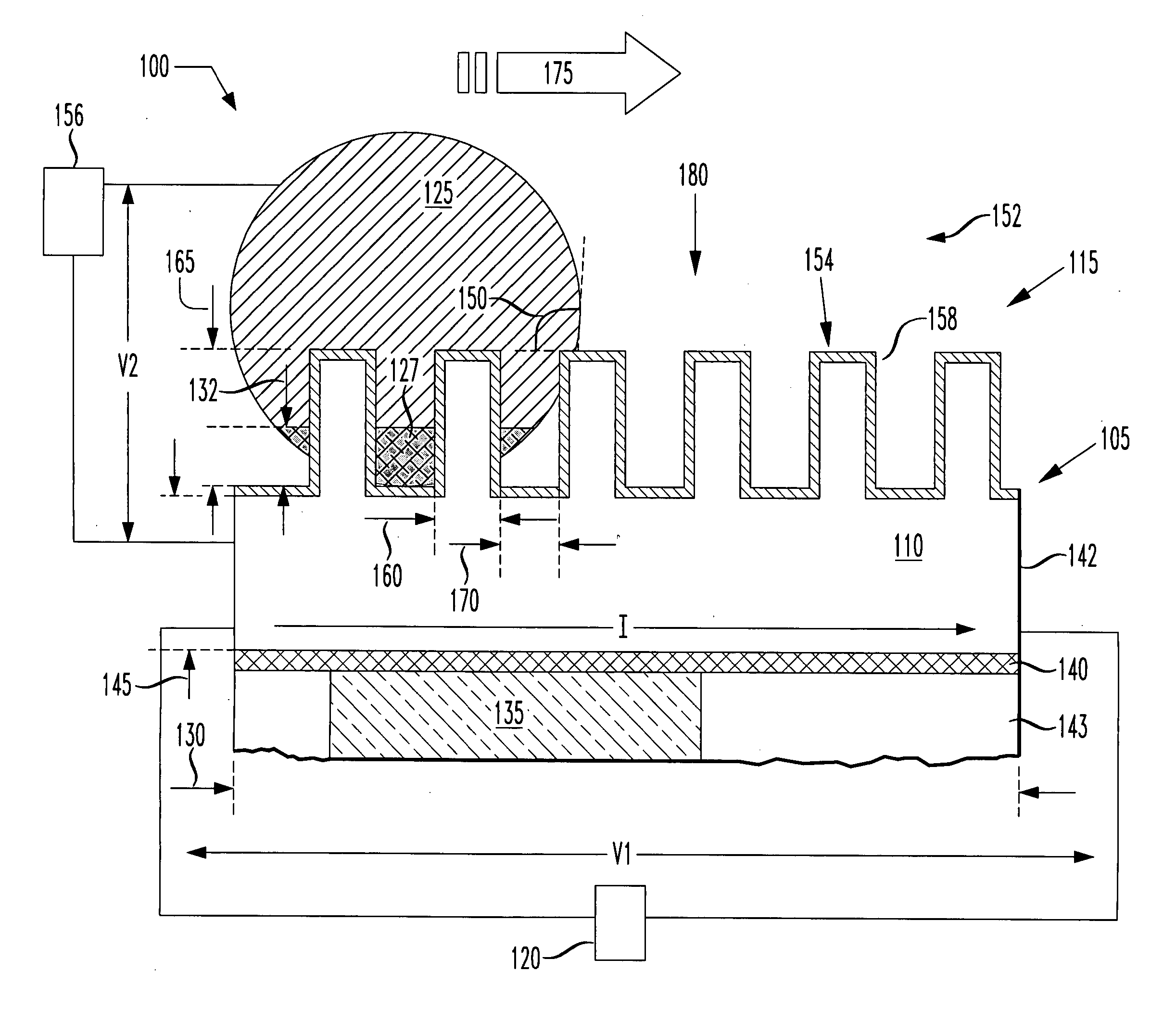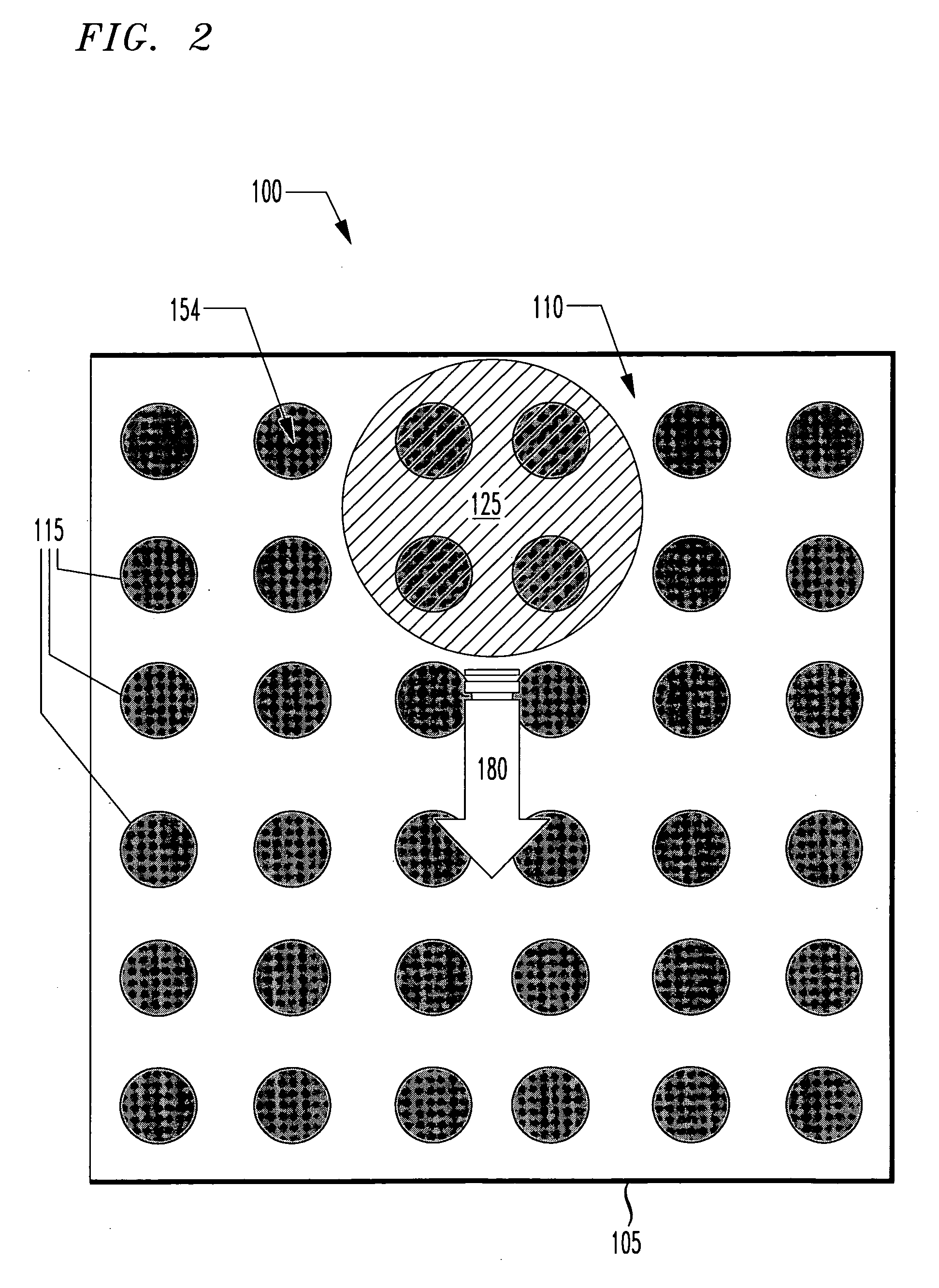Heat-induced transitions on a structured surface
a structure and transition technology, applied in the field of heat-induced transitions on a structured surface, can solve the problems of droplets not returning to their position on the top of the structure, existing surfaces do not provide adequate reversible control of wetting and dewetting,
- Summary
- Abstract
- Description
- Claims
- Application Information
AI Technical Summary
Benefits of technology
Problems solved by technology
Method used
Image
Examples
Embodiment Construction
[0016] The present invention recognizes, for the first time, that the vertical position of a fluid can be moved from the bottom to the top of certain kinds of fluid-support-structures by converting a portion of the fluid to a vapor. The application of a current through a conductive base layer that the fluid-support-structures are on causes heating of the lower portion of the fluid. The heated portion of the fluid is rapidly vaporized. The vaporized fluid rapidly expands, thereby pushing the non-vaporized portion of fluid to the tops of the fluid-support-structures.
[0017] As part of the present invention, it was discovered that moving fluids in this manner facilitates the transition of a surface from a wetted to a non-wetted state. It was further discovered that moving fluids in this manner also facilitates the mixing of fluids. For instance, vertically moving two fluids on the surface as described herein can promote convection in the two fluids, resulting in their mixing.
[0018] Ea...
PUM
 Login to View More
Login to View More Abstract
Description
Claims
Application Information
 Login to View More
Login to View More - R&D
- Intellectual Property
- Life Sciences
- Materials
- Tech Scout
- Unparalleled Data Quality
- Higher Quality Content
- 60% Fewer Hallucinations
Browse by: Latest US Patents, China's latest patents, Technical Efficacy Thesaurus, Application Domain, Technology Topic, Popular Technical Reports.
© 2025 PatSnap. All rights reserved.Legal|Privacy policy|Modern Slavery Act Transparency Statement|Sitemap|About US| Contact US: help@patsnap.com



